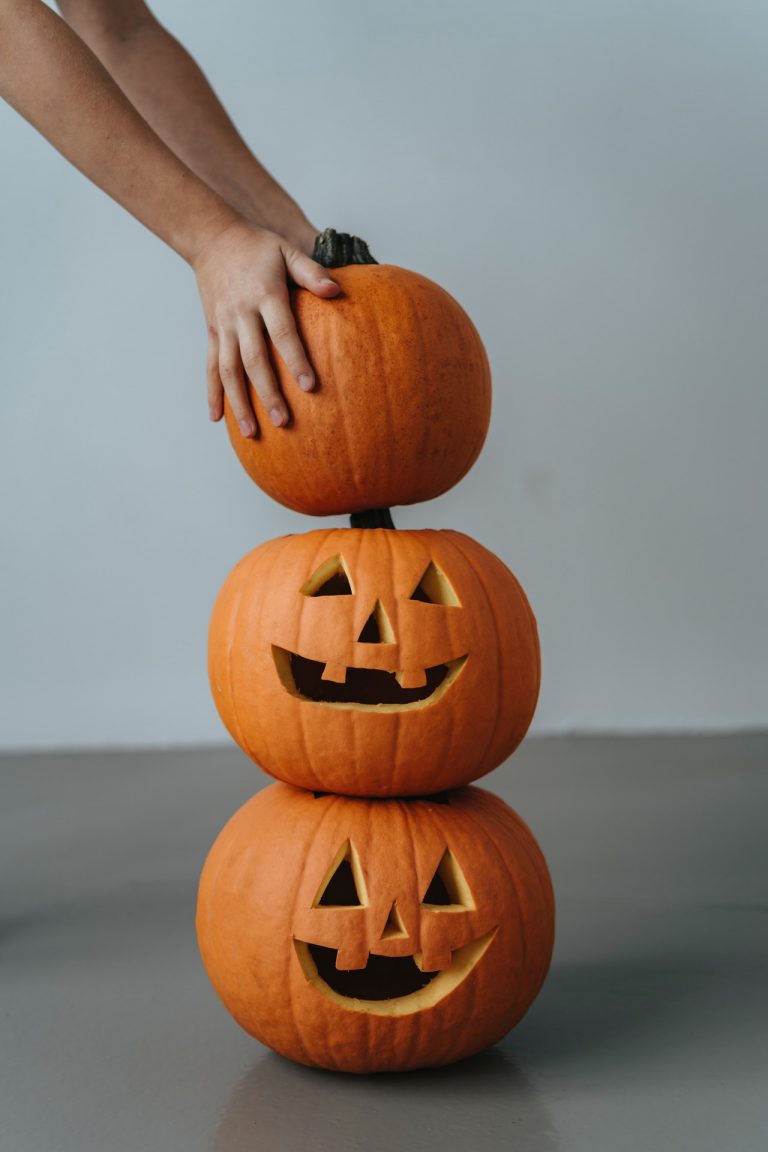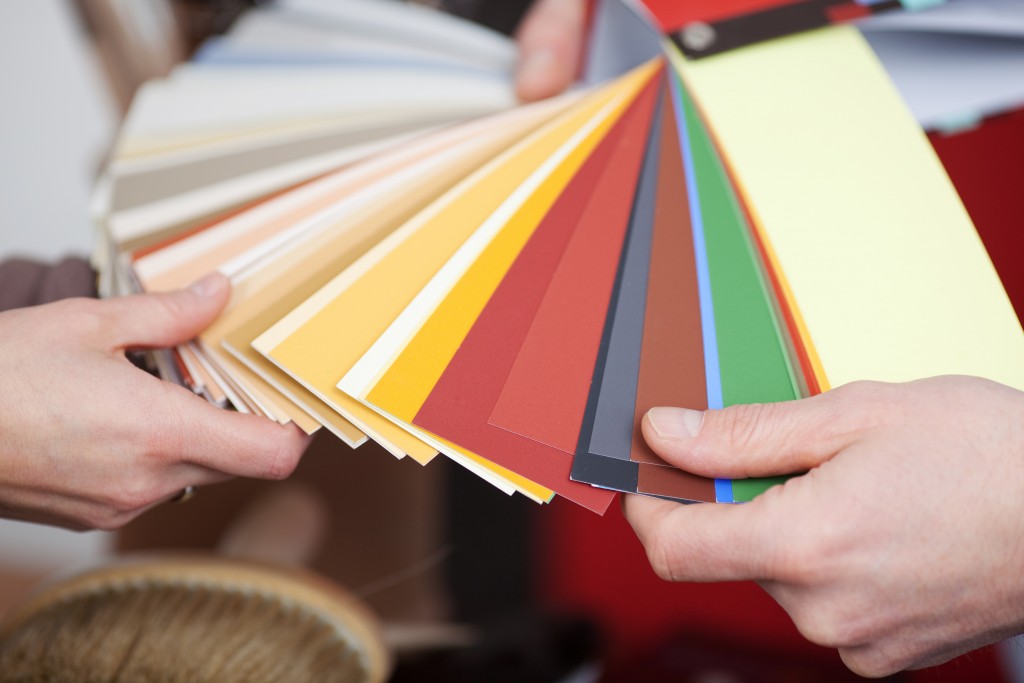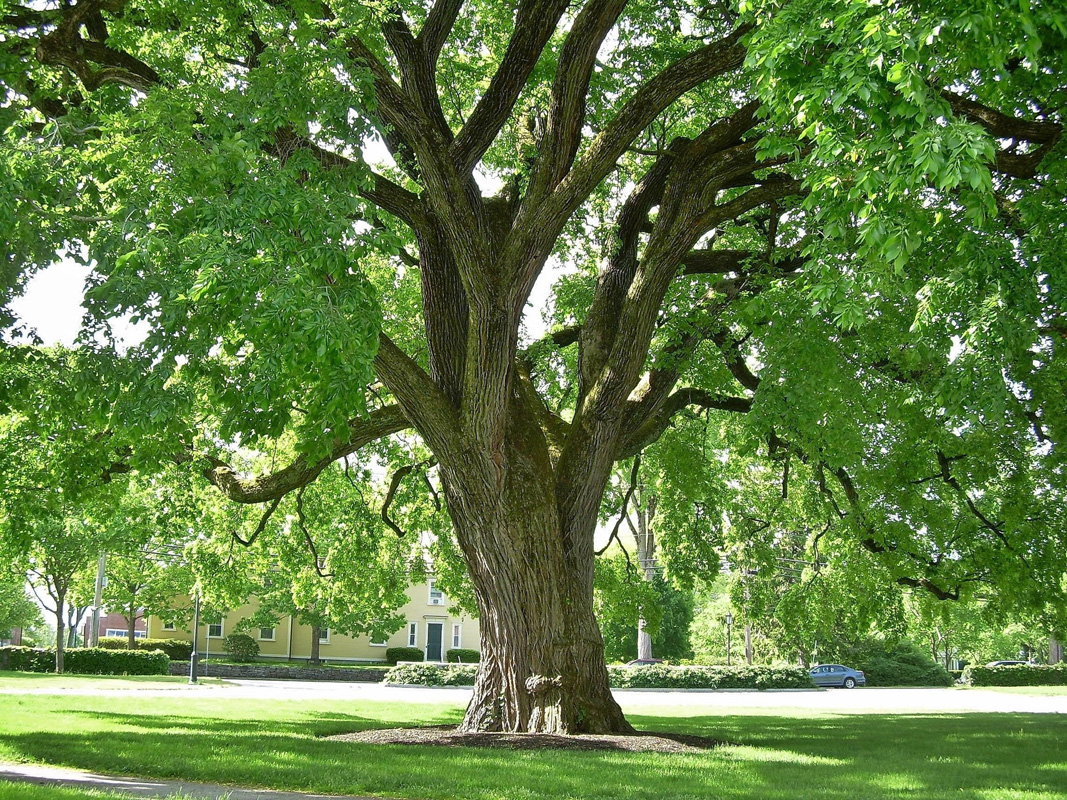Halloween is just around the corner.
During October, homeowners think of ways to transform the design of their interior and give their backyard a makeover. One way to spruce up a home is to use the classic Halloween pumpkin.
This big, orange fruit (yes, folks, pumpkin is not a vegetable) is what you’ll use to create the scary jack-o’-lantern. Apart from making Halloween pumpkin décor, you could use this plant to whip up delicious treats for you and your family.
What is the Meaning of Pumpkin on Halloween?
The carved Halloween pumpkin commemorates the memory of lost souls. People would hollow out the fruit and cut it to create a grimacing face. They then place a small candle inside the pumpkin to make it glow.
The Story of the Jack-o’-Lantern
Early Irish immigrants to the United States brought the tradition of creating a creepy jack-o’-lantern during Halloween.
Jack, according to Irish folklore, was a blacksmith who had tricked the devil on many occasions. When Jack passed on, he could not enter hell and heaven. When the devil dismissed him, he gave Jack a burning ember. Jack then hollowed out a turnip, allowing him to carry the ember and provide the light he needed.
The Irish remember this folklore every year by carving creepy faces on turnips and putting a burning piece of coal inside the vegetable. However, when the Irish immigrated to the United States, they discovered that pumpkins were more widely available. The candles also replaced the burning coals, giving the Halloween pumpkin a more frightening vibe.
Today, people don’t use traditional candles when decorating their Halloween pumpkin. They instead opt for a flashlight or a battery-operated candle.
Halloween Pumpkins History
Pumpkins are said to originate from Central America and were cultivated for centuries by Native Americans. It wasn’t until the 1700s that pumpkin cultivation spread to Europe, where it was bred into the large, round pumpkin variety we know today.
Pumpkins quickly became popular throughout North America as they were easy to grow and abundant during the fall months. As settlers moved westward, pumpkin carving was adopted as a popular tradition around Halloween time. People would carve scary faces on pumpkins, insert candles inside them, and use them as lanterns to ward off evil spirits. This tradition became known as “Jack-o’-Lanterns” after an Irish folktale of a man named “Stingy Jack” who could not get into heaven or hell and was doomed to wander the earth with a pumpkin lantern.
Today, pumpkin carving is still popular around Halloween time, and pumpkin patches are now plentiful throughout North America. Pumpkins are also used to decorate homes during this holiday and for cooking pies, soups, and other delectable treats. No matter how you celebrate Halloween, pumpkins will always be part of its history!
Pumpkins Varieties
Pumpkins come in many shapes, sizes, and colors – ranging from small white ‘baby bears’ to large yellow or gray-striped ‘Cinderellas.’ Each variety of pumpkin holds its unique charm and specific characteristics that make them perfect for crafting, cooking, or carving. Let’s break down some of the most popular pumpkin varieties so you can gain insight into finding the perfect variety for your garden.
For Halloween pumpkins that are sure to impress, a classic bright orange variety like the Howden pumpkin will be an excellent choice, thanks to its sturdy stem and perfectly round shape. If looking for a pumpkin that serves a dual purpose, the Sweet Sugar Pie pumpkin is a favorite, delivering both stunning aesthetics and a delicious, smooth texture that’s great for pies or savory dishes. A sugar pumpkin is on the smaller side, typically having a sweet taste perfect for cooking. A Jack-O-Lantern pumpkin has a more vibrant orange hue and a large, slightly elongated shape ideal for carving festive designs.
Further, white pumpkins, such as “ghost pumpkins,” draw attention thanks to their enchanting absence of color, while warty pumpkins boast a unique appearance with their rough, bumpy texture. Finally, remember those enchanting, pale blue-skinned varieties like Jarrahdale and Queensland Blue, which captivate the eye and create a visual feast. Their dense golden flesh is also perfect for roasting or pureeing.
By studying these pumpkin characteristics, you’ll undoubtedly be able to distinguish between common types of pumpkins with ease and confidence.
Halloween Pumpkins Nutritional Chart
Pumpkins are packed with nutrition, providing many health benefits. One cup of pumpkin contains nearly 20% of the daily value of Vitamin C and important antioxidants such as carotenoids and lutein, which can help to reduce inflammation and fight against free radical damage. Pumpkins are also a great source of dietary fiber, offering soluble and insoluble types, which can help regulate cholesterol levels and maintain digestive health.
Furthermore, pumpkin is low in calories but high in essential minerals such as magnesium, potassium, phosphorus, and zinc vital for overall health. With its unique flavor and abundant nutrients, pumpkin should be included in any healthy diet. Nutritionists recommend incorporating pumpkin into meals throughout the day by using it in smoothies, baked goods, soups, and salads.
Although pumpkin may be the first vegetable that comes to mind when discussing fall, many others are in this category. Sweet potatoes and carrots are other popular vegetables of the season that can offer a nutritious and delicious alternative to pumpkin. For example, sweet potatoes contain more Vitamin A and less sugar, while carrots have more beta-carotene.
How to Grow Pumpkins for Halloween
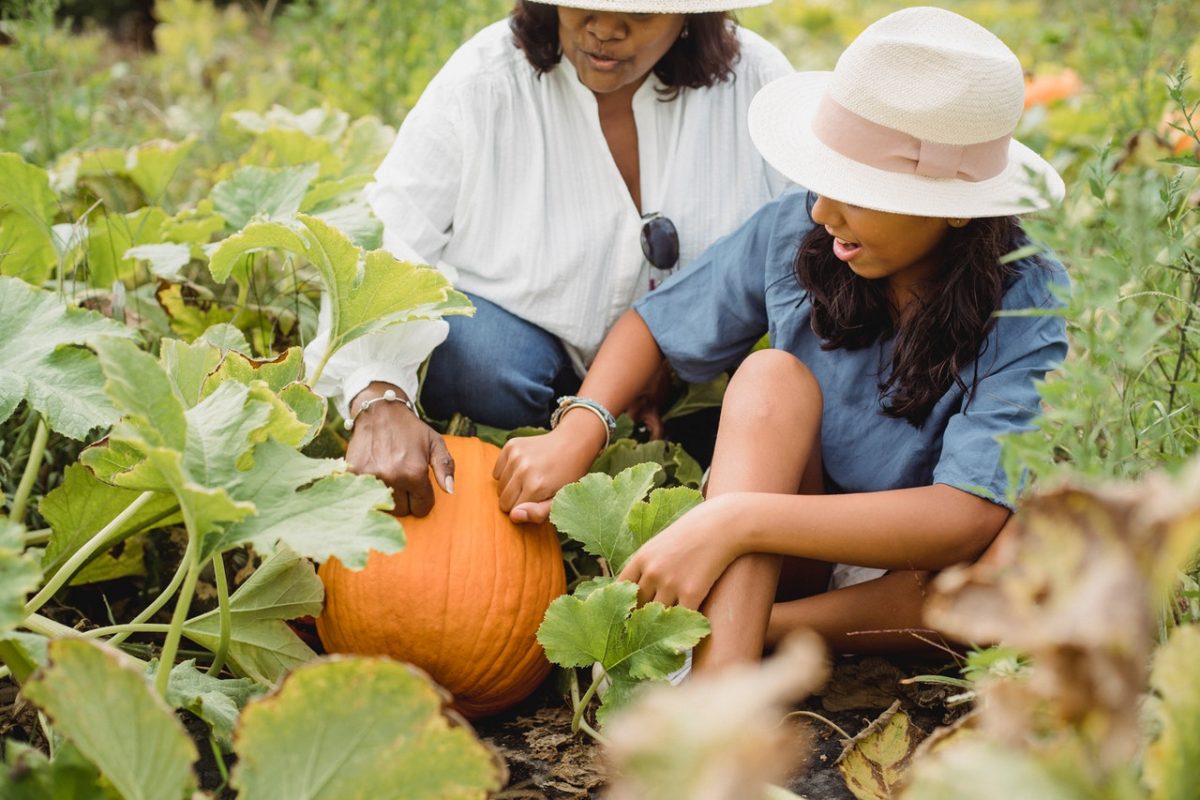
Note: The Halloween pumpkin takes time to grow. If you’re thinking about growing this fruit in October, you’ll want to rethink that decision, as the ideal time to plant and grow pumpkins is from late May to early July.
Also, pumpkins take 90 to 120 days to mature. Don’t worry, though. You can buy a Halloween pumpkin at a pumpkin patch and then set a reminder to purchase pumpkin seeds for planting in May.
If you plan to grow Halloween pumpkins in the late spring, buy seeds ready for planting.
Choosing a Planting Site
Before you plant the seeds, remember that you’ll need plenty of room in your backyard. Due to the fruit’s large vines, you must plant these seeds five feet apart. If you’re growing smaller varieties of the Halloween pumpkin, space the seeds three feet apart.
The pH of your soil should be between 6 and 6.8. Also, check if the area is clear of weeds and pests. Consider using a weed block a few weeks before planting to allow the weeds to die naturally.
Sowing
When sowing the pumpkin seeds in the soil, plant them directly into the ground approximately an inch deep.
Watering
Watering your Halloween pumpkin diligently is crucial, as the vine can become vulnerable to disease. Doing this task early in the morning is key, especially during summertime, as the hot weather can dry the plants. Using a soaker hose can get the job done.
On top of watering, you can keep your Halloween pumpkins hydrated by adding mulch around the perimeter.
Pest Control
Keeping pests away is important to grow a healthy and beautiful Halloween pumpkin. Use appropriate pest control products to keep cucumber beetles and squash bugs from damaging your pumpkins.
Halloween Pumpkins Companion Plants
Pumpkins are hearty vegetables that withstand many common garden pests, but proper companion planting will help ensure pumpkin health. By planting certain plants alongside pumpkins, you can strengthen their defenses against potential predators and diseases. For example, oregano, thyme, and mint are natural repellents for pesky bugs.
Interplanting pumpkin with marigolds is also beneficial because these flowers release a chemical in the soil that deters harmful nematodes, which can otherwise assault young pumpkin seedlings.
Lastly, always plant pumpkins near beans or corn to access nitrogen-rich soil since they require large amounts of this nutrient for healthy growth. With careful companion planting, your pumpkin patch will stay strong and yield plenty of goodness. So why not mix things up this fall season and try growing rainbow corn, beans, marigolds, and herbs, besides growing pumpkin plants?
Fertilizing Pumpkins
Fertilizing pumpkin plants is key to a successful pumpkin plant growing season. While pumpkin can be incredibly resilient, it still requires nourishment to reach their full potential.
You can find organic and synthetic pumpkin fertilizers. Organic fertilizers are more environmentally friendly than synthetic ones, containing natural ingredients like compost, manure, or plant extracts. Organic fertilizers are typically better at nourishing pumpkin soil and providing it with the essential micronutrients it needs for healthy growth.
On the other hand, synthetic fertilizers can quickly provide an abundance of nitrogen and potassium but may not introduce beneficial micronutrients into the pumpkin soil. Pumpkins need an abundance of nitrogen and potassium – two essential macronutrients that support their growth and production. But, some synthetic fertilizers may contain chemicals that could damage the pumpkin or its environment if not applied correctly. Consider both organic and synthetic fertilizers, considering the pumpkin’s specific needs.
The best time to fertilize pumpkins is when the plants are about 2-3 weeks old and just before the pumpkin growing season begins. During this time, their roots absorb nutrients easily, and the overall growth is accelerated.
Applying fertilizer to pumpkin plants every month or two during the growing stages is also a great way to promote healthy growth and yield more fruit. Applying too much fertilizer can be harmful, so always check the product instructions to ensure you use the correct amount. Here you can also learn how to grow and care for butter lettuce.
Storing And Preserving Pumpkins
When autumn arrives, the vibrant orange pumpkins become the quintessential symbol of the season and a versatile ingredient in countless recipes. However, preserving and storing these gourds can take time and effort. To ensure they last the season, begin by choosing one without bruises, soft spots, or any signs of damage.
To prevent premature rotting, keep it away from direct sunlight and maintain proper air circulation. This could mean storing it on a board with holes or in a garage, shed, or cool pantry, ideally with a temperature of 50-65°F. If the pumpkin is cut open, remove the seeds and pulp to slow down decomposition, then cover the exposed surface with plastic wrap and refrigerate.
For long-term storage of pumpkin flesh, consider freezing it in usable portions. The proper method of freezing pumpkins involves selecting a fully matured one, washing it thoroughly, cutting it into chunks, and removing the seeds and membranes. Then, the pumpkin chunks should be blanched in boiling water for about 2-3 minutes and immediately cooled in an ice bath. Once the chunks are fully cooled, they can be transferred to freezer-safe containers or bags and stored in the freezer for up to 6 months.
Alternatively, pumpkins can also be preserved through canning. The pumpkin flesh is cooked and pureed, then packed into sterilized jars with proper headspace and processed in a pressure canner according to recommended guidelines. Properly canned pumpkins can be stored for up to one year.
Preserved pumpkin can be a versatile ingredient to use in a variety of recipes. For a seasonal twist, pureed pumpkin can be added to pancakes, waffles, and muffins. It can also be used to make creamy soups and stews or as a base for pumpkin curry. Preserved pumpkins can be used in pies, cheesecakes, or bread pudding for a sweet treat. Additionally, roasted pumpkin can be used as a topping for salads or as a side dish with roasted meats.
How Do You Make a Halloween Pumpkin?
When choosing a pumpkin for Halloween decorations, pick fresh one, has no bruises, and with a sturdy stem. Also, check if the fruit has a flat bottom. This way, it won’t roll while you carve.
The next step is to cut the fruit from the bottom. Cutting the Halloween pumpkin lid from the bottom helps prevent the sides from caving in.
If you insist on carving from the top, do so at an angle using a boning knife. This way, the lid won’t fall inside the pumpkin when you place it back on top like it would with a traditional up-and-down cut.
Next comes scooping out all the pulp. Use an ice cream scoop to hollow out the pumpkin. Set aside the scooped pulp and seeds to use the leftovers for other purposes.
Before you carve your jack-o’-lantern face, sketch out your design on a piece of paper. You can then use this paper as a pattern. Alternatively, you could purchase a pumpkin carving kit.
Hold the fruit on your lap when you’re ready to carve your Halloween pumpkin. This lets you easily create features when the face looks up at you.
Begin by making rough and simple cuts using a serrated kitchen knife. Avoid cutting on a slant and instead opt for clean up-and-down slices.
Lastly, place a battery-operated candle or a flashlight inside your Halloween pumpkin to make it glow.
How to Use Leftover Halloween Pumpkin
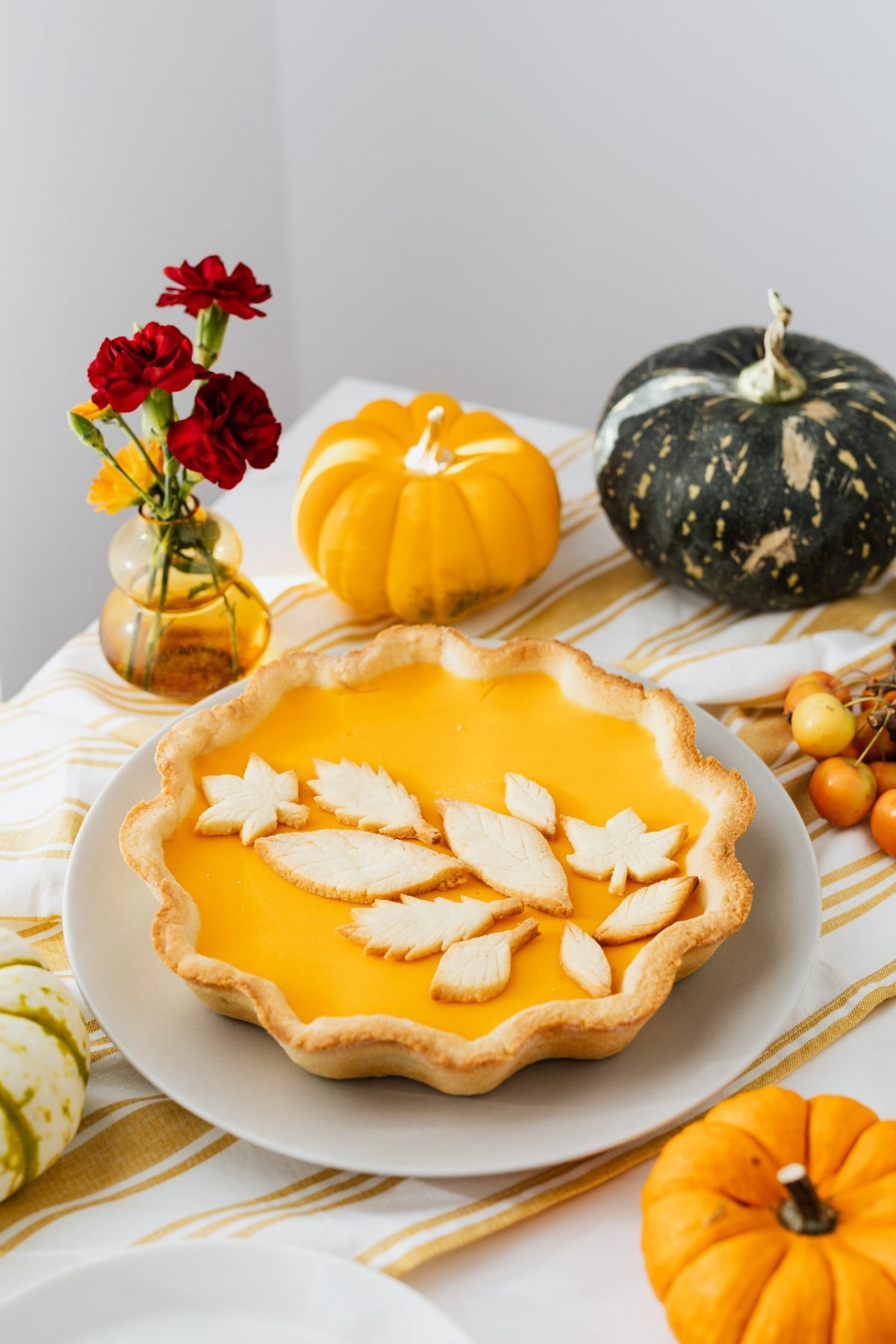
If you’ve leftover Halloween pumpkin seeds, you could roast them to make a flavored snack. You could also sprinkle them over a salad.
As for leftover pumpkin flesh, you could whip up a classic pumpkin pie. You’ll be steaming and pureeing the flesh to create the pie filling.
As for the skin, you could roast it and eat it as a side to roast chicken. You could also mash the skin, cook it and use the mashed pumpkin as an alternative to mashed potatoes.
Halloween pumpkins aren’t just great for decorating your home. You can also use them to make fall-inspired meals for guests and families.
10 Amazing Tips And Precautions While Growing Halloween Pumpkins
With the following easy-to-follow tips, you’ll be able to successfully grow Halloween pumpkins:
-
- Please choose the right location: Pumpkins require plenty of sunlight to reach their full potential, so choosing a spot with plenty of sunlight during the pumpkin growing season is best.
- Choose the right plant: Choose the right variety of pumpkin seeds for your region and climate—visit your local garden center or pumpkin farm for advice. Look for pumpkin varieties that are large, round, and have a thick stem, as these are the best for carving.
- Select quality soil: Pumpkin prefers loamy soils with good drainage, as the roots can struggle to grow properly in clay soil or other poorly draining soils. The pumpkin may not reach its full potential if planted in a spot with heavy clay soil due to a lack of proper root growth.
- Watering requirements and how to avoid over-watering: Pumpkins require about 1-2 inches of water per week. Lack of sufficient water can cause wilting or stunted growth. However, they are also sensitive to overwatering, which can lead to root rot and other problems. It is best to water the pumpkin in the morning when possible, allowing pumpkin leaves to dry before nightfall.
-
- Controls pests: Halloween pumpkin pests, such as squash bugs and powdery mildew, can be a real nuisance. Take precautionary measures to control these pests.. If you notice the presence of pests on the stems or leaves, spray them with an insecticide or fungicide immediately. Use eco-friendly products whenever possible to protect beneficial insects like bees!
- Mulching: Consider adding mulch around the patch to retain moisture and prevent weeds from popping up.
- Maintain them correctly to promote healthy growth: Pruning helps to discourage diseases and encourages healthy pumpkin growth. Begin by removing dead and diseased leaves, stems, and vines throughout the pumpkin growing stages. Additionally, if any pumpkin branches have grown too long or are crossing one another, trim them back to promote air circulation within the patch and reduce the chances of fungal diseases from spreading.
- Prevent pumpkin damage: To prevent pumpkin damage during storms or high winds, it’s important to take protective measures ahead of time. If a storm is imminent, create an enclosure around the patch with sturdy stakes and plastic sheeting to protect the area from wind gusts and heavy downpours of rain.
- Harvest pumpkins efficiently: Once fully mature—you can tell when they’re ready to be picked by their color and texture. Use a sharp knife or pruning shears to cut the stem off at its base, but be sure not to damage it too much, as this could cause the pumpkin to rot faster.
- Cure before storing: Once harvested, it’s essential to cure the pumpkins before storing them. This involves leaving them in a warm, dry place for about two weeks to toughen the skin and prolong their shelf life.
- Be cautious while carving Halloween pumpkins: Always use a sharp knife when cutting out pumpkin designs, and always carve away from yourself.
Wrapping Up
Maybe growing a pumpkin is not as hard as growing a coconut palm tree in your backyard, but still, you must put some effort into getting healthy Halloween pumpkins. Growing healthy pumpkin plants for Halloween is a great way to add a festive touch to your home. Not only does pumpkin planting bring the season’s joy alive, but it also provides an assortment perfect for decorating, sharing, and carving into spooky Jack-o’-lanterns!
By growing pumpkin plants in your backyard, you can enjoy a variety of excellent decorations for fall celebrations. With dedication, time, and love, you can grow stunning pumpkin patches that add a touch of Halloween cheer! Happy pumpkin growing!
FAQs About Halloween Pumpkins
1) Can I plant the seeds from my Halloween pumpkin?
Yes, you can! If you have a pumpkin patch or garden, simply dig up some soil and plant the pumpkin seeds. Depending on where you live, the growing season typically begins in late spring and lasts through early autumn when pumpkins are ready to be harvested.
2) How do you grow pumpkins for beginners?
Start by choosing a sunny spot in your garden or pumpkin patch to plant the seeds. Prepare the soil first by adding compost, fertilizer, and water. Water regularly and add more nutrients when needed. You can even try growing pumpkins in a pot at first.
3) How long does it take to grow a pumpkin for Halloween?
Depending on the variety, it takes 90 to 120 days for pumpkins to mature fully. For pumpkin growers looking to have pumpkin patches ready for Halloween, it’s best to start the pumpkin growing season in late spring or early summer.
4) Should I leave pumpkin seeds out overnight?
No, pumpkin seeds should not be left out overnight. While pumpkin seed shells are hard and durable, they can still spoil after hours of exposure to moisture, heat, and sunlight.
5) Should I cut off dying pumpkin leaves?
Yes, pumpkin leaves that are dying or already dead should be removed. This will help reduce the onset of disease and pests affecting the pumpkin plants’ health. To cut off pumpkin leaves without damaging the plant, use sharp scissors or shears to snip at their base.
6) What happens if you pluck a pumpkin too soon?
There is a specific pumpkin growing time, so if you pluck it too soon, it will be ripe enough to enjoy for Halloween. Unripe pumpkins have thin, green skin and are usually quite small. They won’t last long after being picked and can easily rot if left out.

